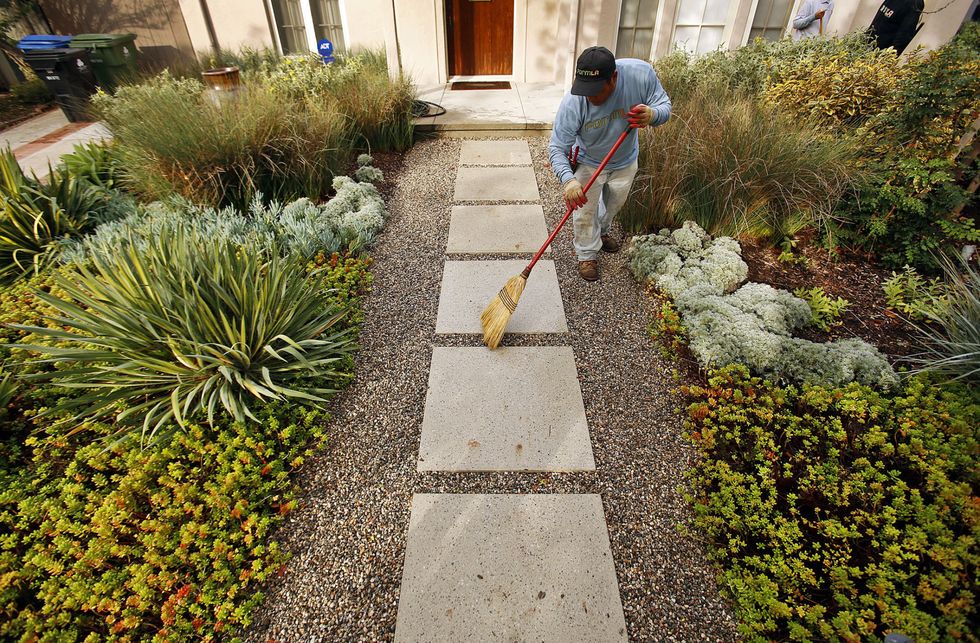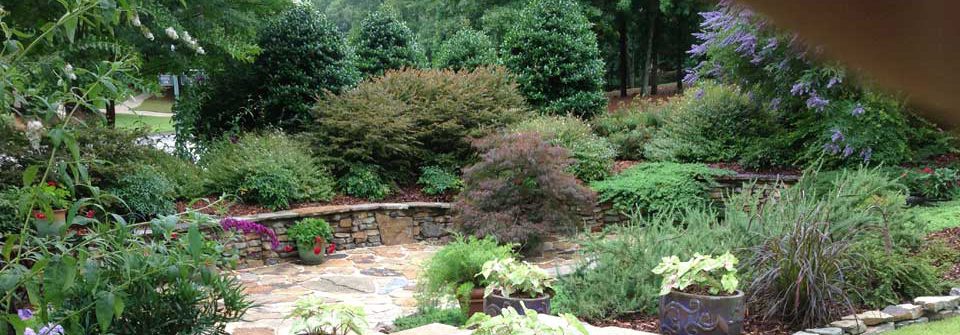Professional Bush Removal Jacksonville: Safe and Efficient Bush Removal Provider
Professional Bush Removal Jacksonville: Safe and Efficient Bush Removal Provider
Blog Article
Elevate Your Building's Aesthetic With Lasting Landscaping Layouts and Eco-Friendly Practices

Advantages of Lasting Landscaping
Applying lasting landscape design methods not just preserves natural deposits but additionally promotes biodiversity and improves general environmental health. By choosing environment-friendly landscaping techniques, homeowner can reap a plethora of benefits that prolong past just aesthetic charm. One substantial benefit is the reduction of water usage with the use of drought-resistant plants, rain gardens, and efficient irrigation systems. This not only reduces utility costs yet additionally adds to water conservation initiatives in the area.
Moreover, lasting landscape design can enhance dirt wellness by minimizing the usage of chemical fertilizers and pesticides, thus producing a much healthier atmosphere for plant growth and advantageous soil organisms. This, subsequently, enhances the total durability of the landscape to endure ecological stressors and environment change effects - landscaping contractor Jacksonville. Additionally, lasting landscape design techniques can bring in diverse wild animals, including pollinators like and butterflies, fostering a much more lively and well balanced ecological community within the building
Incorporating Native Plants
To build on the advantages of sustainable landscape design, a critical emphasis on including native plants can further improve environmental durability and advertise biodiversity within the landscape. Indigenous plants are species that naturally occur in a certain location and have actually evolved to prosper in the regional climate, dirt problems, and community. By consisting of indigenous plants in landscape design layouts, property owners can reduce water usage, reduce the requirement for chemical pesticides and fertilizers, and sustain the local wild animals population.
Including indigenous plants also assists in preserving the unique character and identification of a region's plants. These plants usually call for less maintenance when established, making them a cost-efficient and lasting landscape design solution in the long run. In addition, native plants can bring in native pollinators like butterflies and bees, adding to the total health of the ecological community.
When picking indigenous plants for landscaping jobs, it is necessary to select species that are well-suited to the specific environmental problems of the site. Consulting with local nurseries or arboretums can provide valuable assistance on picking the best indigenous plants for a particular area. By incorporating native plants right into landscape design styles, building proprietors can develop gorgeous, sustainable outdoor spaces that benefit both the setting and the community.

Water Conservation Strategies
Effective irrigation methods play an important role in sustainable landscaping techniques, guaranteeing optimum water preservation initiatives in outside rooms. Applying techniques such as drip watering, rainwater harvesting, and wise watering systems can considerably decrease water waste while keeping a healthy landscape. Trickle watering supplies water directly to the origins of plants, minimizing evaporation and overflow. Rainwater gathering entails accumulating rainwater from roofings and keeping it for later usage in irrigation, lowering the dependence on local water resources. Smart irrigation systems utilize weather information and soil wetness degrees to change sprinkling schedules, avoiding overwatering and promoting water performance.
Along with innovative watering approaches, xeriscaping is another water-saving landscaping strategy that concentrates on using drought-resistant plants, compost, and efficient irrigation to create a low-water landscape style - landscaping contractor Jacksonville. By selecting native plants that are fit to the neighborhood climate and dirt problems, residential or commercial property proprietors can reduce the need for extreme watering, inevitably conserving water and promoting a lasting outside environment
Eco-Friendly Hardscaping Ideas
Enhancing outdoor rooms with eco-friendly hardscaping functions can add dramatically to sustainable landscaping techniques. Opt for products like recovered timber, recycled concrete, or all-natural stone to decrease ecological impact when thinking about hardscaping browse around this site components. These materials not just add a special visual charm to your exterior room however also lower the need for new sources removal.
Applying absorptive leading alternatives such as crushed rock or permeable concrete can help in reducing water drainage and promote groundwater recharge. These alternatives enable rain to leak right into the ground, avoiding erosion and reducing the concern on stormwater systems.
Incorporating native plants right into hardscaping styles can better enhance eco-friendliness by sustaining neighborhood wild animals and minimizing the requirement for excessive watering or chemical treatments. By integrating upright gardens or environment-friendly walls, you can introduce much more vegetation right into metropolitan setups, boosting air quality and biodiversity.
Incorporating energy-efficient lights, such as solar-powered LEDs, right into hardscaping styles can lower electrical power usage and lower your residential or commercial property's carbon footprint. Prioritizing environment-friendly hardscaping concepts not just improves the beauty of your outdoor room yet also demonstrates a commitment to ecological stewardship.
Maintenance Tips for Lasting Landscapes

Routinely trim plants to promote healthy growth and avoid overgrowth that can lead to pest diseases or problems. Usage organic plant foods to nurture the dirt and plants without unsafe chemicals that can leach into the environment.
Conclusion
In conclusion, lasting landscape design methods use countless benefits for residential look at this web-site property owners, from boosting the visual charm of the surroundings to promoting environmental conservation. By including indigenous plants, carrying out water preservation methods, and making use of green hardscaping concepts, homeowner can create beautiful landscapes that are also environmentally liable. With proper upkeep, lasting landscapes can prosper and contribute to a much healthier ecosystem for both humans and wildlife.
In addition, sustainable landscape design can enhance soil health additional hints and wellness by lessening the use of chemical plant foods and chemicals, consequently producing a much healthier setting for plant development and advantageous soil organisms.To construct upon the advantages of lasting landscaping, a critical emphasis on incorporating indigenous plants can better enhance ecological durability and promote biodiversity within the landscape. By consisting of indigenous plants in landscape design styles, home proprietors can minimize water usage, lessen the demand for chemical pesticides and fertilizers, and support the local wild animals population.
These plants typically require less maintenance when developed, making them a lasting and cost-effective landscape design remedy in the long run. By incorporating indigenous plants into landscaping layouts, residential or commercial property owners can create stunning, sustainable outside rooms that benefit both the environment and the area.
Report this page